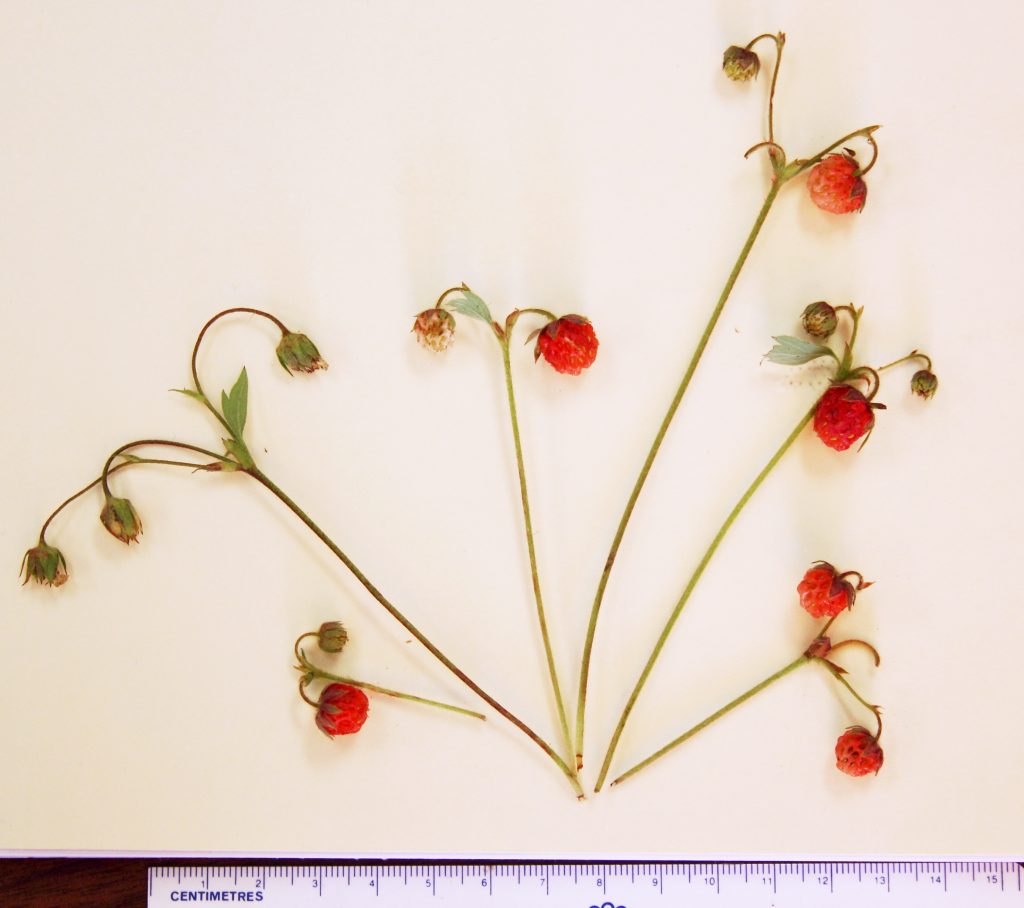
Features
Production
Research
New strawberry species found in Oregon
July 12, 2013 By Sharon Durham USDA-ARS
 The Cascade strawberry (Fragaria cascadensis). The length of the flower stalk for this species is variable. These stalks were collected near Waldo Lake, Oregon. Kim Hummer.
The Cascade strawberry (Fragaria cascadensis). The length of the flower stalk for this species is variable. These stalks were collected near Waldo Lake, Oregon. Kim Hummer.Jul. 12, 2013 – A recently discovered wild strawberry provides new genetic material for plant research and may lead to a new class of commercial strawberries, according to a U.S. Department of Agriculture (USDA) scientist. Genes from the newly created strawberries may yield new flavors or disease resistance.
Agricultural Research Service (ARS) scientist Kim Hummer, with the National Clonal Germplasm Repository at Corvallis, Ore., found the new species during several plant collection expeditions in the high peaks of Oregon’s Cascade Mountains. She named it Fragaria cascadensis.
ARS is USDA’s chief intramural scientific research agency, and this research supports the USDA priority of promoting international food security.
The new strawberry is a perennial plant with white flowers and green leaves, and it differs from other strawberry species of the region by having hairs on the upper side of its leaves, comma-shaped, small brown fruits called “achenes” on the strawberry surface, and 10 sets of chromosomes, unlike the eight sets in commercial strawberries.
The strawberry’s distribution in the Oregon Cascades stretches from the Columbia River in the north to the vicinity of Crater Lake in the south, at elevations from about 3,000 feet up to the tree line. The northern distribution range of F. cascadensis has an average annual precipitation of 12 to 15 inches, but the southern range receives only about six inches of precipitation annually.
F. cascadensis is now included in the living collections of the Corvallis germplasm repository, which preserves plant genetic resources of temperate fruit, nut, and other crops.
According to Hummer, the new strawberry’s biggest impact could come by crossing it with other strawberries having the same number of chromosomes, such as the cultivated F. vescana or the wild Russian species F. iturpensis. Those crosses could produce hybrids with disease resistance, improved flavor, or other important traits.
Discovery of the new strawberry was reported in the Journal of the Botanical Research Institute of Texas.
Read more about this research in the July 2013 issue of Agricultural Research magazine.
Print this page